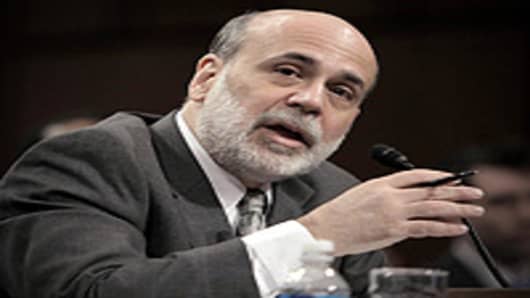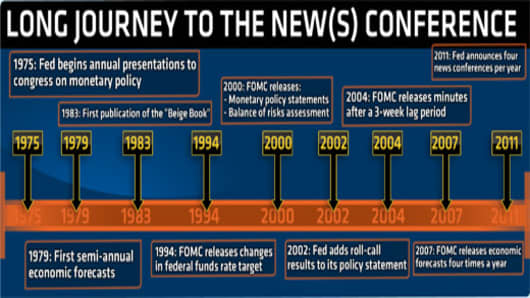The Federal Reserve as we know it is not as old as you might think.
Established in 1914, the Fed has had a long journey toward transparency, with a quickening pace over the last two decades.
Put simply, there are things the Fed does that we take for granted, just assuming they date back to Charles Sumner Hamlin, the first chairman of the Federal Reserve.
CNBC takes a look at the progression leading up to Wednesday's news conference with the current chairman, Ben Bernanke.
1975: The Fed chairman began giving annual statements to each chamber of Congress and then takes questions.
1979: The Fed began providing semi-annual economic forecasts.
1983: The first "Beige Book," which gives insight into economic activity across all districts, issued.
1994: The Federal Open Market Committee began giving statements regarding shifts in the target for the federal funds rate.
2000: The Fed initiated policy statements with a balance of risks commentary.
2002: The Fed makes public the FOMC votes.
2004: The six-week lag between a Fed meeting and the release of the minutes cut in half to just three weeks.
2007: Just before the financial crisis hit, the Fed increased the frequency of its economic forecasts to four times per year.
2011: All that brings us to April 27, the first-ever news conference directly after a FOMC policy meeting.
The Federal Reserve didn't change much in its first 60 years, but in the last 30 years there has been a steady trend toward sharing more information with the outside world.



